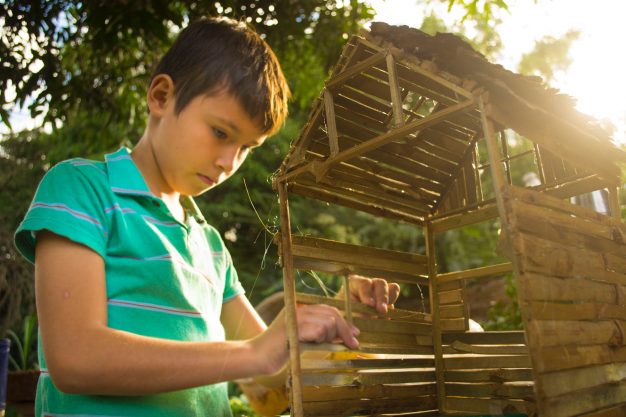Based in Warsaw, Beata Patuszyńska is a PR professional with 15 years’ experience in the real estate sector. She works on planting ideas of sustainable development among grown-up players on the real estate market, as well as educating the youngest on city issues. In this article for Child in the City, she recounts her preparations for speaking at the last Child in the City International Seminar, in Antwerp.
Getting ready for my presentation during “Children in the sustainable city” seminar I was thinking why are children barely present in designing cities, which they use. I remembered conversations with my friends of how much influence children – even the small ones – have on our purchase decisions. And I am not talking of small expenditures such as kids’ snacks or even clothes. Children co-decide when it comes to choosing cars, apartments, not to mention the destination of family summer holidays. In the case of a car they might not be able to judge the engine’s performance or how economical it is, still, we value their opinions, because we treat them as partners and equal users.
So I sat with my computer and found proof that it is a broader trend. According to the research of Polish Program of Service Quality (2013) as many as 96% of parents admit that the children influence what they buy. It is not only about obvious expenditures such as toys or sweets, but also more serious ones. Apart from holidays (60,2%), apartments (23,1%) and cars (16,7%), which I have mentioned before, children decide on the choice of computer equipment (70,4%), colour of the walls in the apartment (40,5%), electronic equipment (25,4%), kitchen appliances (12,3%) and even parents’ clothes (12,8%).
And then the same grown-ups go to work for example as city planners. There they put on a serious hat as a professional and from this authoritarian position they decide what children need in urban space. Children are practically absent in consultations concerning city space in Warsaw unless it concerns playgrounds or parks. But when there is a discussion concerning streets or squares, they are not counted as users.
I am sure that an educated and emphatic grown-up is able to make public space safer and more accessible without a child’s help. But will they know how to plan it so children want to use it on their own? My 10-year-old daughter knows how to get to school on her own, still, she does not do it, because it is more fun for her to go with me and her younger brother. I myself would like to travel through more friendly space – not only understood as safe and accessible but first of all stimulating and funny. There is no better expert than a child!





